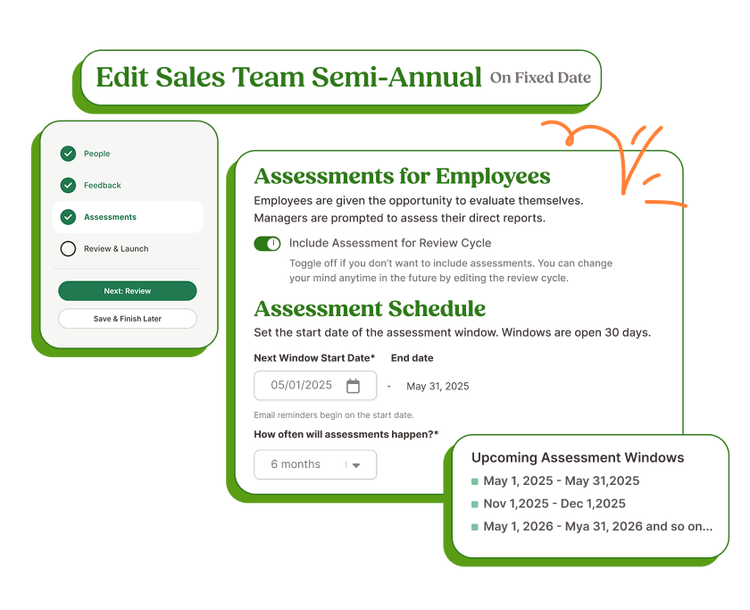Get to the Heart of Growth with Performance Management
Why choose BambooHR® Performance Management?
Easy for employees & HR
Reviews should take minutes, not hours. Make the performance process easy on your people.
Data-backed decisions
Access company and employee performance data to see top performers and struggling employees.
Better employee engagement
Improve participation and morale with clear goals, growth paths, and recognition.
Tools for real growth
Help employees grow and stay accountable with peer feedback, manager reviews, and goals.
Inspire, motivate, and develop your employees
360° FEEDBACK
Create a culture of feedback
Deliver timely, actionable feedback at all levels of your organization and help everyone grow with self, manager-to-employee, peer, and skip-level reviews.


GOALS & ONE-ON-ONES
Give employees the support they need
Encourage progress, tackle challenges, and celebrate wins with regular one-on-ones, right in BambooHR. Create, track, and share individual and team goals anytime, anywhere with the desktop or mobile app.
FLEXIBLE REVIEW CYCLES
Use pre-built reviews, or make your own
Create custom review cycles tailored to your teams’ unique needs. Or if you need to get started quickly, take advantage of pre-built solutions and questions. Because one size doesn’t fit all when it comes to performance reviews!

See how BambooHR Performance Management works
We make performance management easier, so you can set people free to do great work
Get even more out of BambooHR with performance management integrations
Our Performance Management customers say it best

Two hours saved each day
"BambooHR [makes] check-ins and assessments feel less like a chore and more like an opportunity to collaborate. I’ve easily saved at least an hour or two each day that would have otherwise been spent organizing, cross-referencing, or following up manually."
Adunke Adekankun | Customer Success Lead | Risevest Technologies Ltd
Frequently Asked Questions
Who uses performance management software?
With BambooHR, everyone from managers and leadership to employees can take advantage of performance management software. Key employee performance management tools like goal-setting software and feedback features empower employees to own their performance and development.
In addition, performance reports help managers and leadership better understand what’s going well (and what needs improving) both at the individual and company level.
What are performance management best practices?
As you create and implement a performance management program, remember these four performance management best practices:
- Frequent and timely: Ongoing, prompt feedback that’s relevant, constructive, and actionable helps employees identify what to improve on and how to do it.
- Balanced: Manager reviews, self-assessments, and feedback from teammates, direct reports, and customers or vendors (when relevant) provide different perspectives on an employee’s performance, so you get a more complete picture than with a single evaluation.
- Automated: Automated employee performance cycles take the busywork out of performance management. BambooHR helps you automate review schedules, data collection and analysis, and follow-ups.
- People-centered: Positive, genuine relationships between employees and leadership foster a culture of growth and accountability. Relationship-building, mentorship, and communication are key to consistently high performance.

